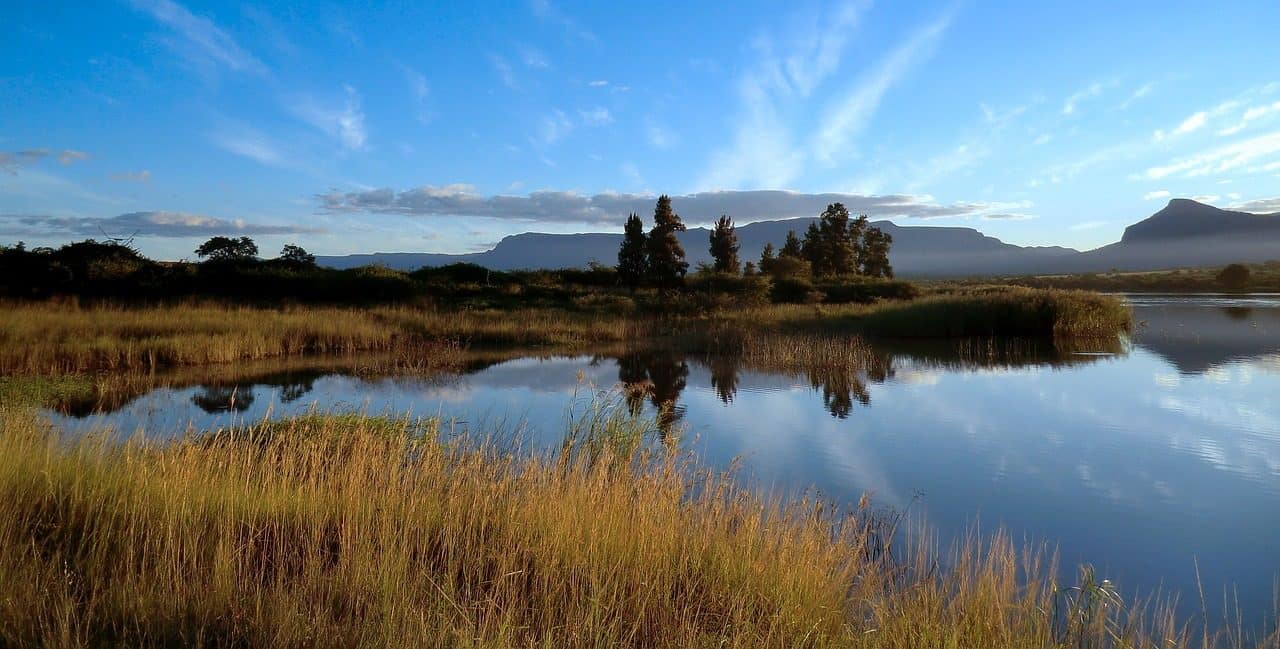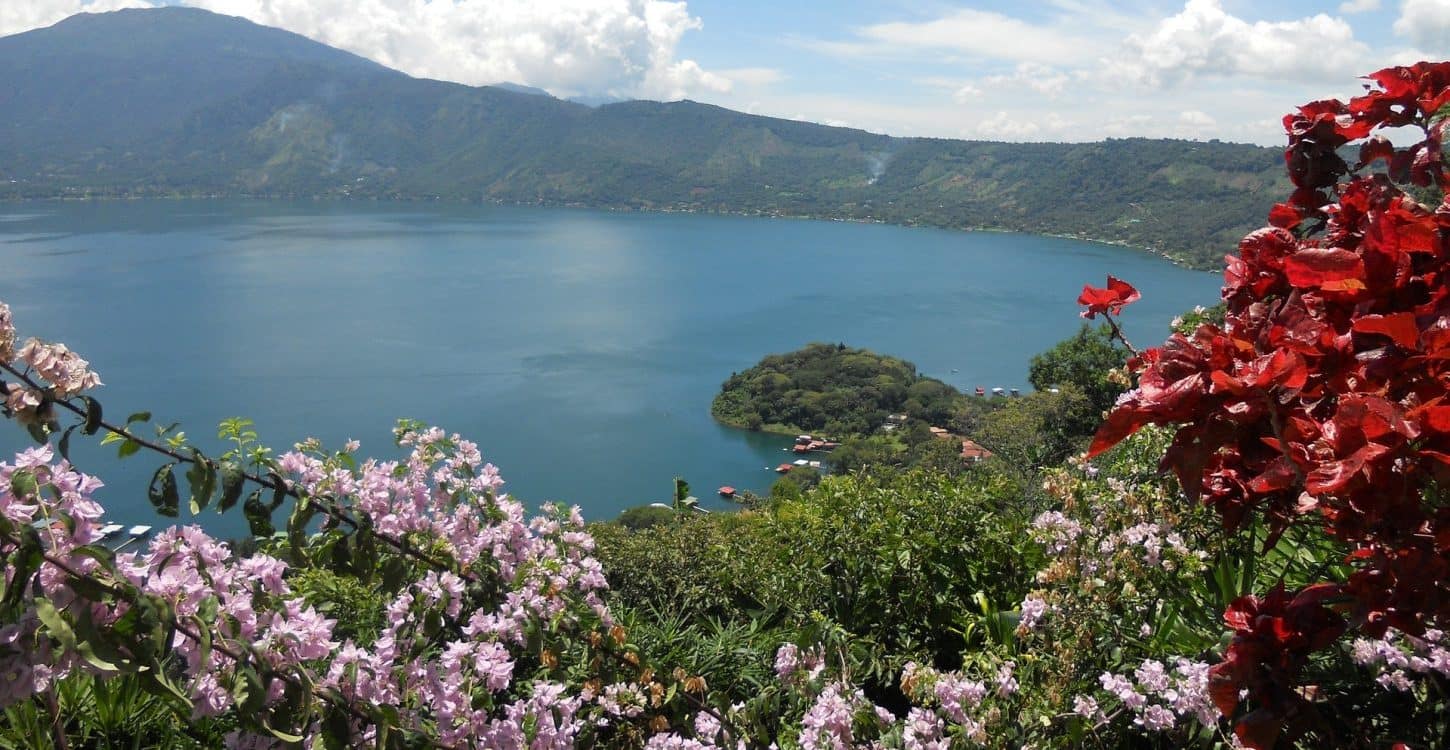With a population of 1.216 billion people and a total landmass of about 1.4 billion square kilometers, Africa is home to some of the largest lakes in the world. The size and depth of these lakes vary from one another, but all share the common factor of being located in an African country.
Africa is home to several large lakes, some as small as a backyard pond and others as large as hundreds of smaller lakes combined into one. To give you an idea of just how much water is contained within these amazing bodies of water, consider that Lake Victoria, Africa’s largest lake, has a surface area larger than South Carolina. Below we examine 10 of the largest lakes in Africa with their surface areas, approximate depths, and more information on where they are located and how they were formed.
Lake Turkana
With an estimated surface area of nearly 7,000 square kilometers, Lake Turkana is the largest lake in Africa. It is also the world’s fourth-largest lake behind the Great Lakes of China, Canada and the United States. The lake is located in the north of Kenya and is fed by the River Turkana, which flows from Ethiopia.
The lake is also fed by smaller rivers, including the K2 and Kiserin, both of which run into the lake from Ethiopia. Like most of the lakes in this article, the lake suffers from little or no fresh water running into it. Water flows into the lake mainly from the rain that falls in Ethiopia, which means the lake can quickly become very low in water levels.
The lake’s water level has been so low that it has been difficult to find a boat to hire to visit the lake. The lake is now slowly beginning to rise again and fishing boats are returning to the lake, which will help to bring more visitors to the area.
Lake Tanganyika
Lake Tanganyika, which has an estimated surface area of nearly 9,000 square kilometers, is the second-largest lake in Africa. Its size is similar to that of Lake Turkana, the largest lake on the continent. However, Lake Tanganyika is located in the middle of three countries: The Democratic Republic of Congo, Tanzania and Zambia.
The lake is fed by the river Congo as well as smaller rivers, including the Rilimbi and its tributary the Mambilima. Because the lake is relatively shallow, the depth varies greatly from one area to the next. In parts of the Congo, it can be as shallow as five meters while in Zambia it can reach 30 meters.
Lake Malawi
Located in southern Africa, Lake Malawi is the third-largest lake in Africa. Its surface area is nearly 10,000 square kilometers and the lake is fed by the river Lake Malawi. The Malawi River flows south from Zambia into Mozambique and then into Lake Malawi. The lake is shallow and has an even bottom, which means it can be easily fished. The lake is also very well-mixed, which means there is little variation in the amount of water from one part of the lake to the next. This lack of variation is what makes it such a great place to grow tropical crops.
Lake Victoria
The fourth-largest lake in Africa is Lake Victoria, which has an estimated size of roughly 9,000 square kilometers. Like Lake Tanganyika, it is located in three countries: Tanzania, Zambia and Kenya.
The lake is fed by the river Victoria, which flows from Tanzania into Zambia and then into Mozambique and then into Madagascar. At the southern end of Lake Victoria, the river flows into the Indian Ocean. Like many of the lakes in this article, the lake suffers from low or no fresh water running into it.
Lake Edward
Lake Edward has an estimated surface area of nearly 13,000 square kilometers, making it the largest lake in the Eastern Cape province of South Africa. The lake was formed thousands of years ago when a glacier dammed up the Edward River, which flows from the Drakensberg mountain range into the lake.
Because the lake is situated in such a hilly area, it has little or no river flows into it. This means the lake has to receive most of its water from the rain that falls on the surrounding areas. Because the lake is situated so far inland and receives so little water, it can easily become very low in water levels, which is why it is such a popular diving destination.
Lake Eyasi
Located in the Western Province of Zambia, Lake Eyasi has an estimated surface level of nearly 3,000 meters. The lake is fed by the Kafue River, which flows from the mountains into the lake.
Because the lake is located so far inland, it receives very little river flow. This means it has to depend on the rain that falls on the surrounding area for most of its water. The lake has a deep, even bottom that makes it an ideal diving destination.
Lake Niobe-Aldoaixougga
The fifth-largest lake in Africa is Lake Niobe-Aldoaixougga, which has an estimated surface level of nearly 3,200 meters. The lake is fed by the river Kafue, which flows from the mountains into the lake. The lake is situated in the Western Province of Zambia, but it is also fed by an even larger lake, Lake Niobe, which is in the Democratic Republic of Congo. Like Lake Niobe-Aldoaixougga, Lake Niobe is fed by the river Kafue. Like the other lakes in this article, the lake is situated so far inland and receives very little river flow that it has to depend on rainwater for most of its water.
Kariba Dam Reservoir
Located in the Western Province of Zambia, Kariba Dam Reservoir has an estimated surface level of nearly 2,700 meters. The lake is fed by the Kafue River, which flows from the mountains into the lake. The lake is situated in the Western Province of Zambia and is fed by the even larger Lake Niobe, which is in the Democratic Republic of Congo.
Like the other lakes in this article, the lake is situated so far inland and receives very little river flow that it has to depend on rainwater for most of its water. The lake has a deep, even bottom that makes it an ideal diving destination.
Kasane Dams Dam and Reservoirs
The sixth-largest lake in Africa is the Kasane Dams Dam and Reservoirs, which has an estimated surface level of nearly 1,500 meters. The lake is fed by the river Kafue, which flows from the mountains into the lake. Located in the Western Province of Zambia, the lake is fed by the even larger Lake Niobe, which is in the Democratic Republic of Congo.
Like the other lakes in this article, the lake is situated so far inland and receives very little river flow that it has to depend on rainwater for most of its water. The lake has a deep, even bottom that makes it an ideal diving destination.
Conclusion
Africa is home to some of the largest lakes in the world. The surface area and depth of these lakes vary greatly and they are all situated in different parts of the continent. Lake Turkana, Lake Victoria, and Lake Edward are located in Kenya, Zambia, and South Africa, respectively.
The other lakes are situated in the Democratic Republic of Congo, Tanzania, Zambia, and Zambia, respectively. If you would like to visit some of these amazing lakes, you will need to travel to a country that borders one of them.



